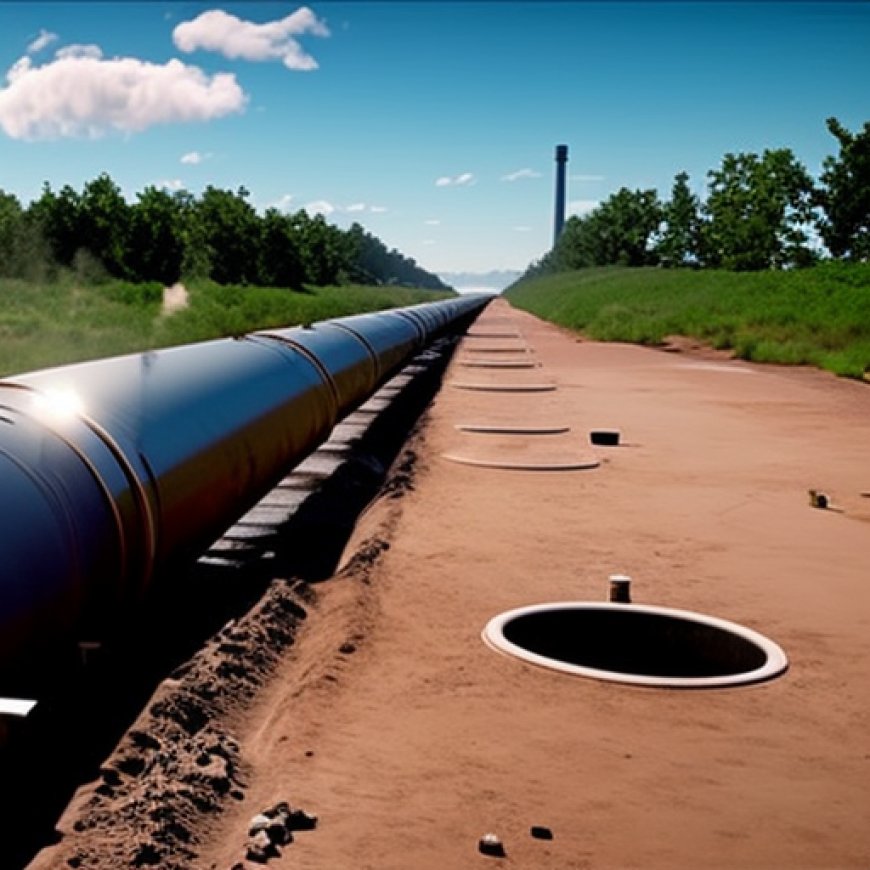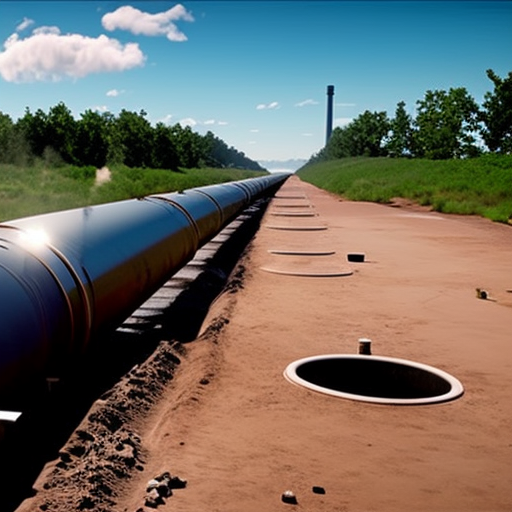‘Wake-up call’: pipeline leak exposes carbon capture safety gaps, advocates say
‘Wake-up call’: pipeline leak exposes carbon capture safety gaps, advocates say The Guardian US


A Major CO2 Leak in Louisiana Exposes Safety Gaps in the Carbon Capture Industry
A major leak of CO2 from an ExxonMobil pipeline in Louisiana exposes dangerous safety gaps that should halt the planned multibillion-dollar carbon capture industry, environmental advocates say.
Leak Details and Response
- An estimated 2,548 barrels of carbon dioxide (CO2) leaked from the Exxon pipeline in Sulphur in Calcasieu parish on 3 April, triggering an emergency response and alarm among residents who live in close proximity to scores of polluting pipelines, petrochemical and fossil fuel facilities.
- It took more than two hours to fix the leak, which is “unacceptable”, according to Kenneth Clarkson from the Pipeline Safety Trust non-profit.
- Interviews by the Guardian suggest that no pipeline operator was on site at the pump station where the leak occurred – and the camera monitoring the facility was not working.
- Exxon staff located 50 miles away in Beaumont, Texas, learned about the leak after it was reported to emergency services.
Safety Concerns and Regulatory Gaps
- CO2 – a greenhouse gas released by burning fossil fuels – is an asphyxiant and intoxicant, which in large quantities can cause injury or death by replacing oxygen in the air.
- About 5,000 miles of CO2 pipelines are currently operating in the US, which are predominantly for transporting the gas to oilfields where it is used to extract hard-to-reach oil – a process known as enhanced oil recovery.
- The incident exposed major flaws in the existing health and safety regulations for CO2 pipelines, which as a result are currently being updated by the Pipeline and Hazardous Materials Safety Administration (PHMSA).
Implications for Sustainable Development Goals
The Sulphur incident should raise “alarm bells” in Louisiana, where the oil and gas industry is backing political efforts to fast-track the construction of CO2 pipelines and carbon capture and storage, according to Monique Harden, director of law and public policy at the Deep South Center for Environmental Justice.
The Biden administration is counting on CCS to meet its climate goals – despite compelling evidence that the technology is inefficient and will probably prolong the use of fossil fuels.
Community Concerns and Future Risks
- Residents, who are frequently subjected to leaks and other major incidents at the polluting industrial plants, fear that this was down to luck.
- A shelter-in-place order – not an evacuation order – was issued for residents within a 0.25-mile radius of the leak and the road closed off for several hours.
- Residents argue that regulations are inadequate and there should have been an emergency alert for the whole parish.
Conclusion
The CO2 leak in Sulphur highlights the need for stronger regulations and safety measures in the carbon capture industry. The incident raises concerns about the expansion of CO2 pipelines and the use of carbon capture and storage technology. It also emphasizes the importance of addressing the Sustainable Development Goals (SDGs), particularly Goal 13 (Climate Action) and Goal 15 (Life on Land), to ensure the protection of communities and the environment.
SDGs, Targets, and Indicators
1. Which SDGs are addressed or connected to the issues highlighted in the article?
- SDG 13: Climate Action
- SDG 15: Life on Land
- SDG 16: Peace, Justice, and Strong Institutions
2. What specific targets under those SDGs can be identified based on the article’s content?
- SDG 13.1: Strengthen resilience and adaptive capacity to climate-related hazards and natural disasters
- SDG 13.2: Integrate climate change measures into national policies, strategies, and planning
- SDG 15.1: Ensure the conservation, restoration, and sustainable use of terrestrial and inland freshwater ecosystems and their services
- SDG 16.7: Ensure responsive, inclusive, participatory, and representative decision-making at all levels
3. Are there any indicators mentioned or implied in the article that can be used to measure progress towards the identified targets?
- Indicator for SDG 13.1: Number of deaths, missing persons, and directly affected people attributed to disasters per 100,000 population
- Indicator for SDG 13.2: Number of countries that have communicated the strengthening of institutional, systemic, and individual capacity-building to implement adaptation, mitigation, and technology transfer
- Indicator for SDG 15.1: Proportion of important sites for terrestrial and freshwater biodiversity that are covered by protected areas
- Indicator for SDG 16.7: Proportions of positions in public institutions (national and local legislatures, public service, and judiciary) held by persons from underrepresented groups
Table: SDGs, Targets, and Indicators
| SDGs | Targets | Indicators |
|---|---|---|
| SDG 13: Climate Action | 13.1: Strengthen resilience and adaptive capacity to climate-related hazards and natural disasters | Number of deaths, missing persons, and directly affected people attributed to disasters per 100,000 population |
| SDG 13: Climate Action | 13.2: Integrate climate change measures into national policies, strategies, and planning | Number of countries that have communicated the strengthening of institutional, systemic, and individual capacity-building to implement adaptation, mitigation, and technology transfer |
| SDG 15: Life on Land | 15.1: Ensure the conservation, restoration, and sustainable use of terrestrial and inland freshwater ecosystems and their services | Proportion of important sites for terrestrial and freshwater biodiversity that are covered by protected areas |
| SDG 16: Peace, Justice, and Strong Institutions | 16.7: Ensure responsive, inclusive, participatory, and representative decision-making at all levels | Proportions of positions in public institutions (national and local legislatures, public service, and judiciary) held by persons from underrepresented groups |
Behold! This splendid article springs forth from the wellspring of knowledge, shaped by a wondrous proprietary AI technology that delved into a vast ocean of data, illuminating the path towards the Sustainable Development Goals. Remember that all rights are reserved by SDG Investors LLC, empowering us to champion progress together.
Source: theguardian.com

Join us, as fellow seekers of change, on a transformative journey at https://sdgtalks.ai/welcome, where you can become a member and actively contribute to shaping a brighter future.







